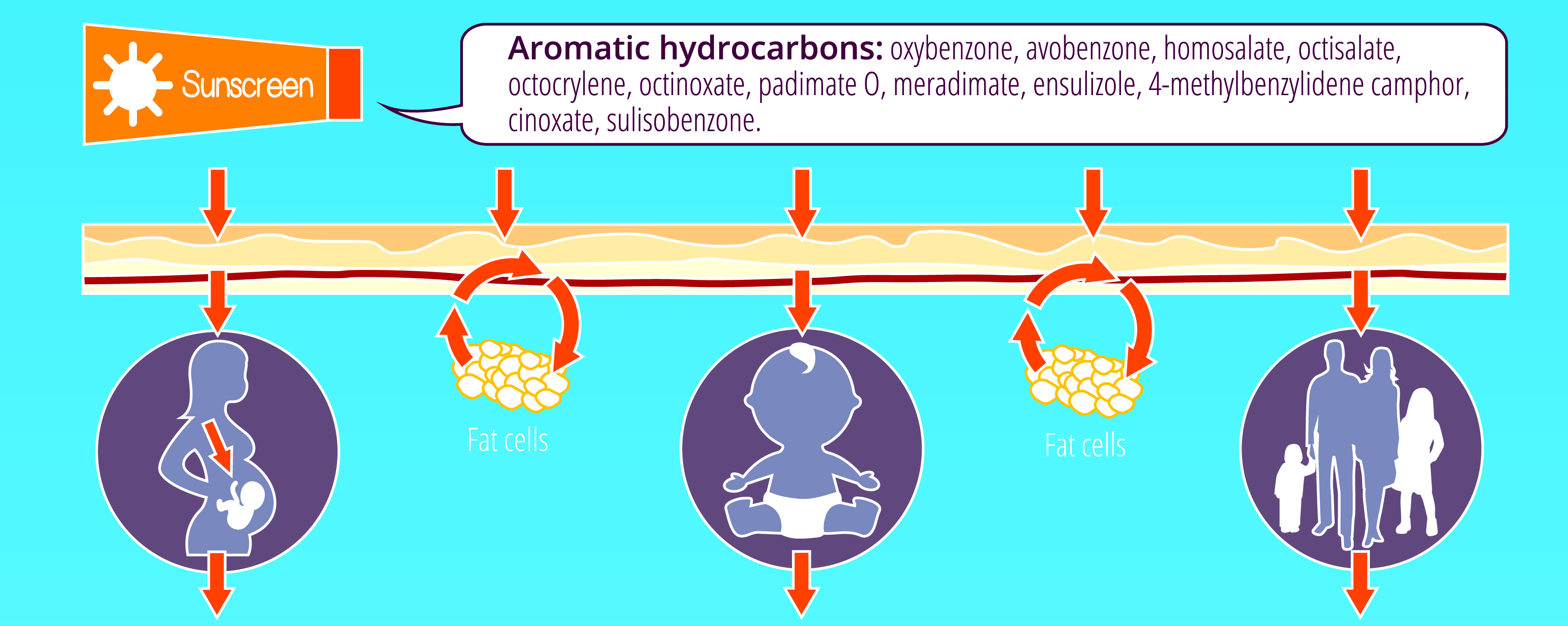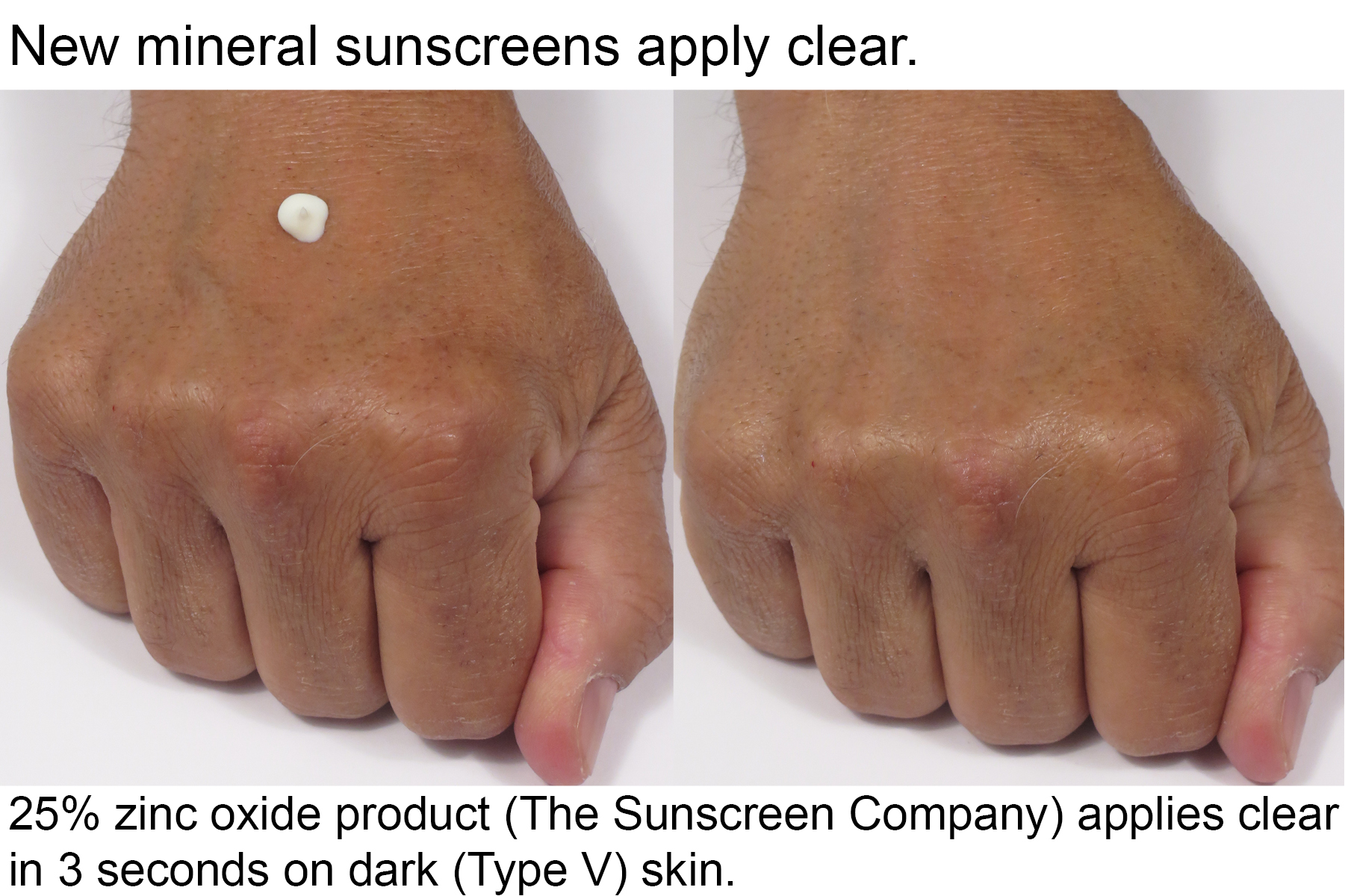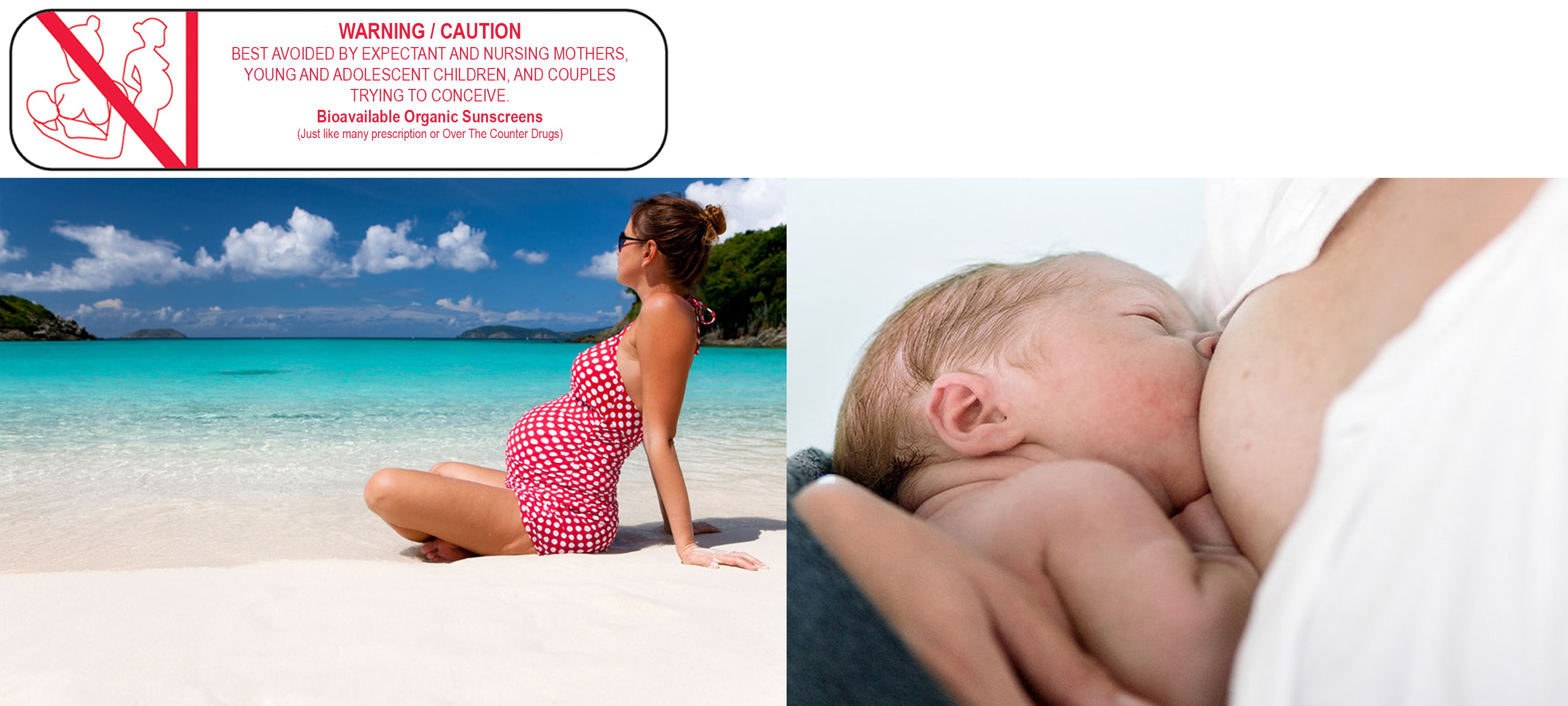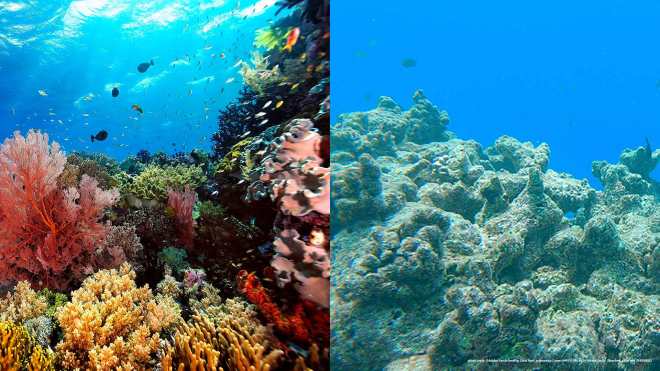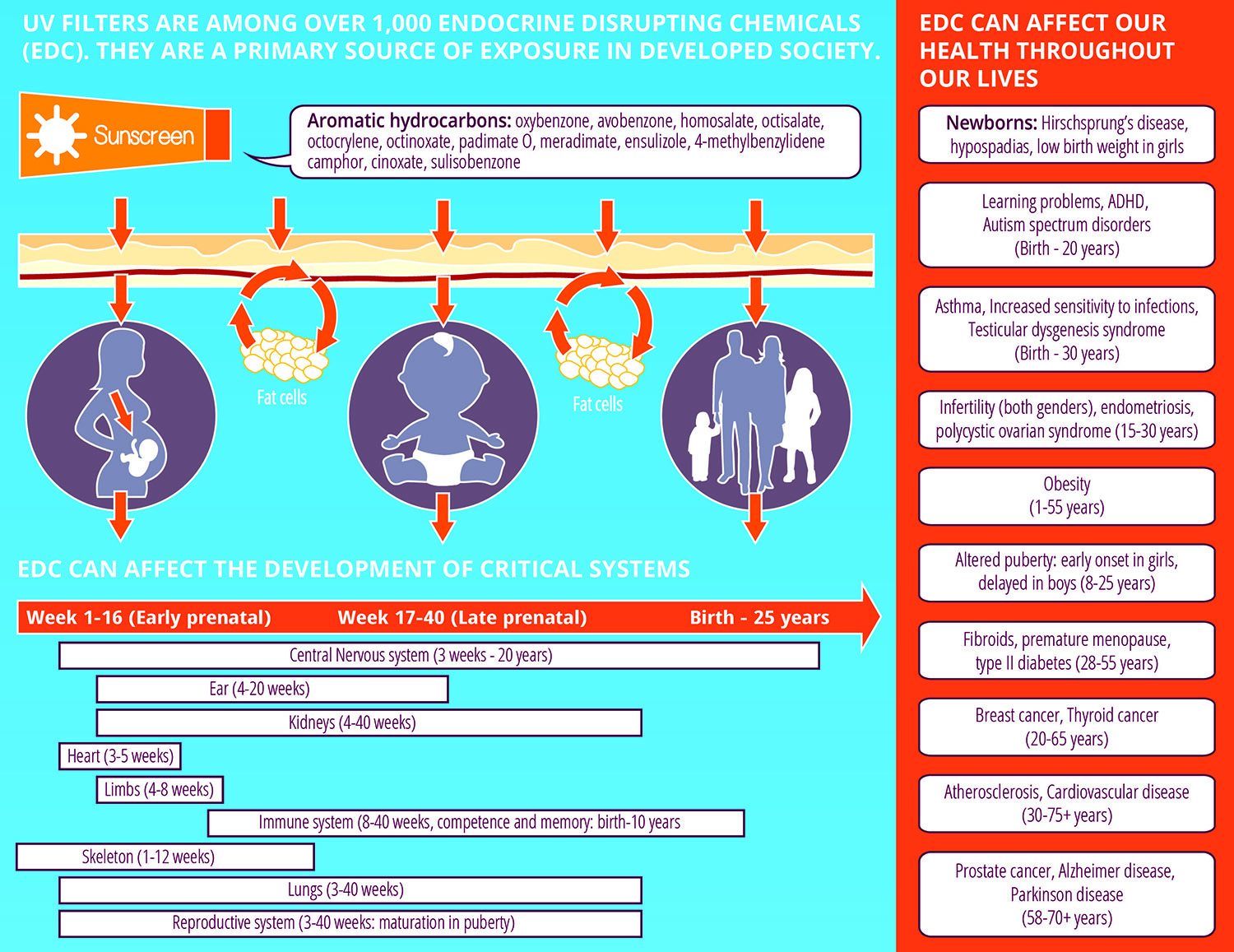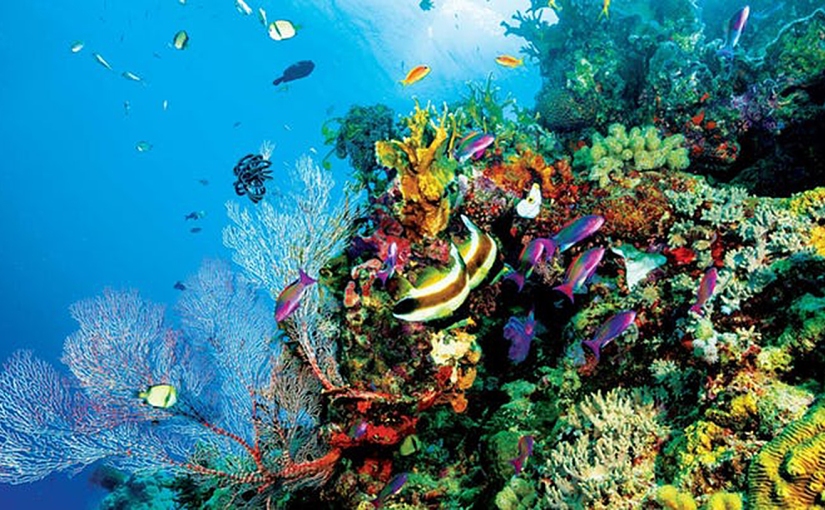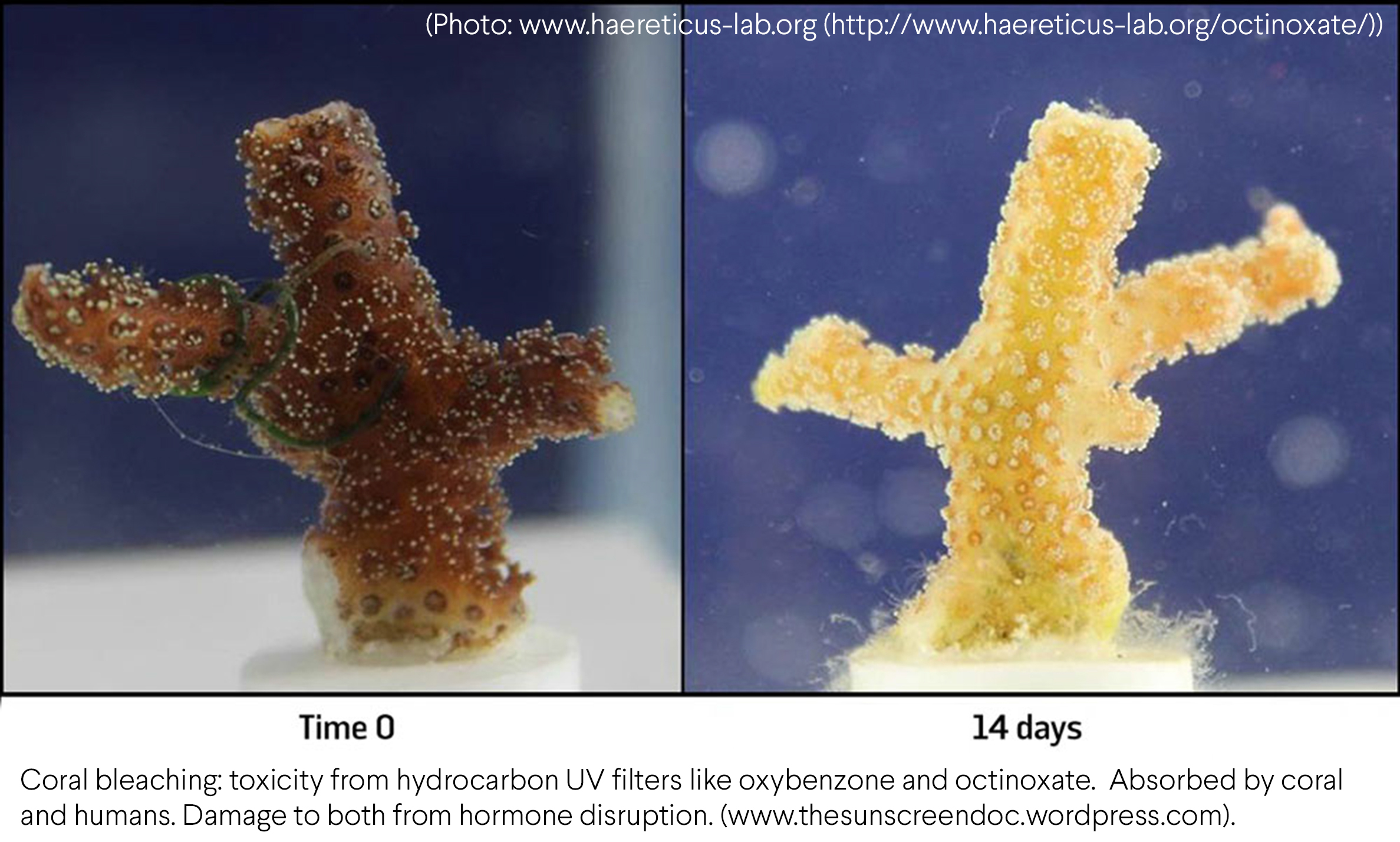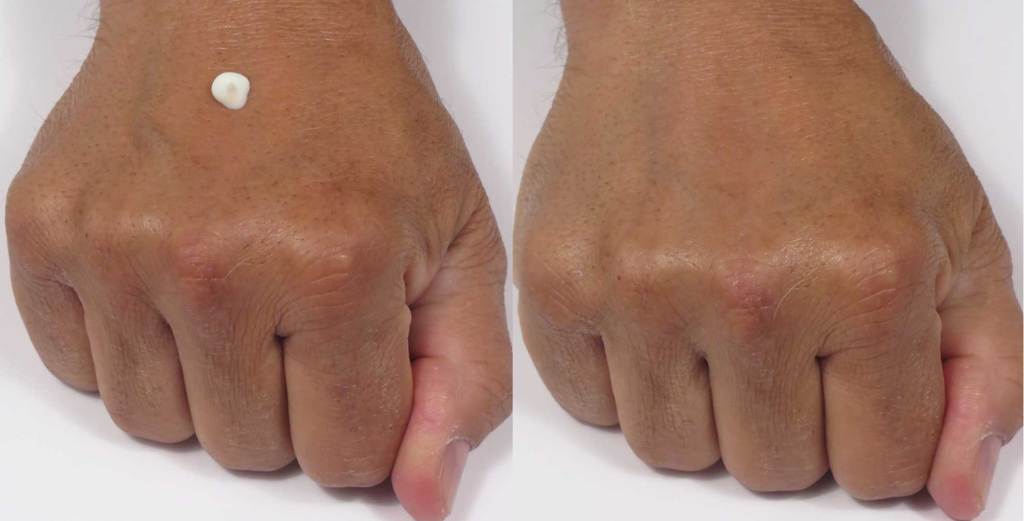
Introduction. The June 2023 Blog presented persuasive evidence why no one should ever use a petrochemical sunscreen containing Soluble Organic UV Filters (SOUVF), particularly pregnant or nursing mothers, and young or adolescent children. They are ineffective and toxic, delivering little if any benefit in preventing skin cancer only serious risks. The diverse human and environmental harm from their ubiquitous pollution are also detailed in the June Blog Post. More physicians now agree with my caution from over a decade ago, The FDA designate 12 SOUVF as “Marketed Unapproved” while they consider whether to ban or restrict them, since they cannot confirm that they are Generally Regarded As Safe or Effective (GRASE).
Everyone must avoid the SOUVF: avobenzone, oxybenzone, octinoxate, octocrylene, homosalate, octisalate, cinoxate, dioxybenzone, ensulizole, meradimate, padimate O, dioxybenzone and sulisobenzone which share one danger. They permeate skin and reach every cell including those in the brain and those in the fetus. No studies – even the 2 week application study used by the FDA – can measure or estimate the exact saturation of all the tissues in your body with these toxic xenobiotics, from daily or frequent use over years. This bioavailability is the first step in established risks for hormone disruption, DNA mutations, and epigenetic changes (bioactivity).
Safety and Efficacy. Mineral filters – zinc oxide and titanium dioxide are the only 2 designated GRASE by the FDA. They do not permeate intact human skin – with no risks for any disorders related to the pollution of your cells and neurohormonal receptors. Zinc oxide never causes allergy or dermatitis unlike several of the SOUVF. At 22-25%, it achieves the UVA-protection needed to prevent skin cancer and photoaging. Zinc oxide < than 15% should be viewed with suspicion and better avoided, as the lack of adequate protection may be masked by the addition of several anti-redness (aspirin-like) chemicals to the inactive ingredients: butyl octyl salicylate (BOS), tridecyl salicylate (TDS), bisabolol, niacin amide, aloe vera, and allantoin. They blunt the biologic early warning signal of erythema (skin redness) to get out the sun, allowing longer sun exposure to more noxious UVA damage, since SOUVF sunscreens, even with avobenzone the lone UVA filter, have inadequate UVA filtering. Sunscreens with low amounts of zinc oxide < 20% will not have enough UVA filtering and with the anti-redness agents in the inactive ingredients fail to protect adequately just like SOUVF sunscreens. Both may facilitate the damage that leads to skin cancer, particularly in fair skin, since they transmit up to 10X more UVA than UVB to your skin.
Guidelines
- Select sunscreens with 22-25% zinc oxide for the best UVA protection and those that apply clear on any colour skin. See www.thesunscreencompany.com. There is no need to use mineral products with titanium dioxide – a UVB and minimal UVA2 filter that helps to raise the SPF value, but on its own or with lower zinc oxide levels do not provide the essential UVA1 protection.
- Calculate your own SPF. For every 1% ZnO you get 1-1.5 SPF units. With titanium dioxide each 1% can achieve 2-2.5 SPF units. With < 22% ZnO and added titanium dioxide – the SPF may be accurate – but then the UVA protection is inadequate. Do not use any mineral sunscreen with BOS, TDS, bisabolol, niacinamide, aloe vera, and allantoin. Avoid acrylates or acrylate copolymers- plastic microbeads- harmful to the environment. The Sunscreen Company truly raises SPF values with a patented blend of a particles that increases UVA protection by 60% and improves the SPF and UVB protection. Whatever the SPF of 10-15% zinc oxide sunscreens are, they can only attain a UVA-Protection Factor of 5-8 – insufficient to truly provide broad spectrum filtering, and prevent skin cancer. Our Simply Zinc line attains a UVA-PF of 20.4, over the minimum of 14 for reasonable protection, and 2-3 times the UVA protection of most brands.
- BOS and TDS are the most harmful of the boosters. In addition to falsely raising the SPF as the others do, any salicylate will reach blood, cross the placenta, and like aspirin should be avoided in pregnancy. They are associated with fetal anomalies from early pregnancy exposure, and a small risk of intracranial and other hemorrhage in the fetus and during vaginal delivery. They are just as harmful to humans and the environment as homosalate and octisalate.
- Avoid products with buzz words like “reef safe”, as there is no system that can actually measure this. They are just trying to distract you from what actually matters – the concentration of zinc oxide at 22-25%. Other distractions are “oxybenzone, octinoxate., or parabens free”. Never use any sunscreen, even if mineral, with preservatives like phenoxyethanol or methylisochlortiazinolone. Both are neurotoxic, especially to fish and coral larva, and to humans if there is enough exposure. Mineral sunscreens are less likely to harm reefs and marine life. Zinc is not accumulating in humans or nature from sunscreens, unlike petrochemical SOUVF. Zinc is a natural mineral found in the human body, fresh and salt water, and all through nature – in plants, soil, and food sources. SOUVF and other toxic petrochemicals like BOS are foreign chemicals that have polluted humans, the unborn, and the entire global biota.
- Only use mineral sunscreens with 25% zinc oxide w/o the noxious chemicals above as inactive ingredients – SAFE even for a fetus, newborn, or young child, indeed for all of us. MOST EFFECTIVE in preventing skin cancer and photoaging. BETTER for nature, the environment, FRIENDLY to coral reefs and all wildlife – marine or land-based. MEETS the sacred rule in Medicine: Primum Non Nocere or First Do No Harm (After Hippocrates 245 AD, Inman 19th Century).
Denis K. Dudley MD, FRCS(C), Board Certified in OB-GYN, USA, Canada, Great Britain. Sub-Specialty Practice in Maternal Fetal Medicine & Reproductive Endocrinology, July 2023.

